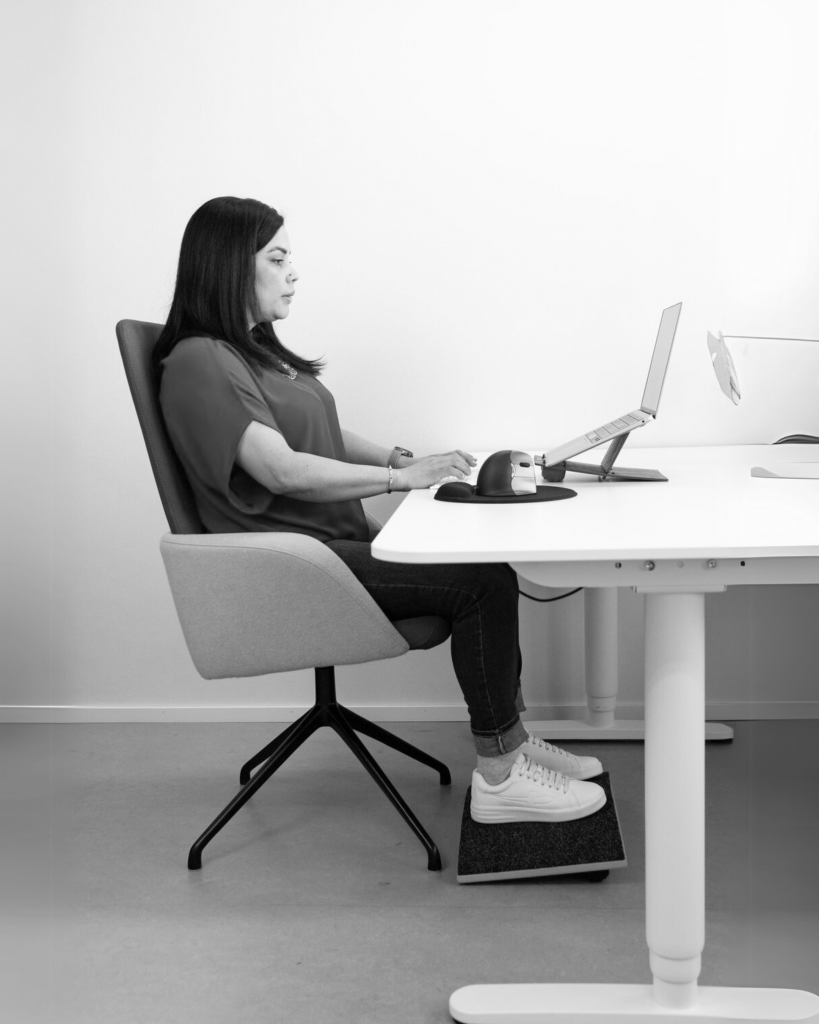Your posture and productivity are directly connected through both physical and cognitive pathways. When you maintain proper alignment, your body experiences improved blood circulation, reduced muscle tension, and better oxygen flow to the brain. This physiological optimization allows for enhanced focus and mental clarity. Poor posture, meanwhile, causes your body to work harder just to maintain position, diverting energy from cognitive tasks and triggering discomfort that interrupts concentration. Addressing your working position through ergonomic adjustments and movement can significantly improve your work output and overall wellbeing.
How does posture affect your productivity?
Posture affects your productivity by creating a physical foundation that either supports or hinders cognitive function. When you sit or stand with proper alignment, your body operates more efficiently, requiring less energy to maintain position and experiencing reduced strain on muscles and joints. This efficiency translates directly to improved mental performance.
The physical-cognitive connection works through several pathways. Proper posture improves breathing capacity, allowing more oxygen to reach your brain. This oxygen boost enhances neural function, improving your ability to concentrate, process information, and make decisions. Additionally, good posture helps maintain healthy blood circulation, ensuring your brain receives optimal nutrition and energy.
The psychological benefits are equally important. When your body feels comfortable and properly aligned, you experience fewer distractions from pain or discomfort. This allows for longer periods of uninterrupted focus and reduces the mental fatigue that comes from constantly adjusting to find relief from postural strain.
Research in ergonomics consistently shows that workers with proper postural support report higher productivity levels, fewer errors, and greater creative output compared to those working in poor ergonomic conditions.
Why does poor posture lead to decreased focus?
Poor posture leads to decreased focus primarily because it restricts proper blood flow and oxygen distribution throughout your body. When you slouch or hunch over your desk, your chest cavity compresses, limiting lung expansion and reducing the amount of oxygen you take in with each breath. This oxygen deprivation directly affects your brain’s performance, making it harder to concentrate on complex tasks.
The physical discomfort of poor posture also creates a significant cognitive distraction. When your neck, shoulders, or back begin to ache from misalignment, your attention naturally diverts to these pain signals. Your brain must allocate resources to process this discomfort, leaving fewer mental resources available for your actual work.
Additionally, poor posture affects your energy levels. Your body expends extra energy trying to maintain balance and compensate for misalignment, causing premature fatigue. This energy drain manifests as afternoon slumps in concentration and productivity, particularly in home office settings where ergonomic desk setups might be lacking.
The psychological impact shouldn’t be underestimated either. Research shows that slouched postures can actually trigger more negative thoughts and lower confidence, while upright postures enhance mood and resilience – all factors that significantly influence your ability to maintain focus.
How can movement improve both posture and work output?
Movement improves both posture and work output by preventing the negative effects of static positions and actively resetting your body’s alignment. Regular, brief movement breaks reactivate muscles that support proper posture, particularly those in your core and back that tend to disengage during long periods of sitting.
Even small movements create significant benefits. Micro-movements, such as shifting weight, stretching arms, or rotating shoulders, help redistribute pressure, improve circulation, and prevent muscle fatigue. These minor adjustments keep your muscles engaged and responsive, making it easier to maintain good posture when you return to focused work.
Movement also delivers fresh oxygen and nutrients to your brain and muscles. This physiological refresh translates to mental renewal – after movement breaks, many people report improved concentration, creativity, and problem-solving abilities. These cognitive boosts directly enhance your work quality and efficiency.
Incorporating structured movement into your workday doesn’t require significant time investment. Simple strategies include:
- Standing up every 30 minutes for a brief stretch
- Alternating between sitting and standing positions
- Walking during phone calls
- Using active tools that encourage subtle movements
These movement practices create a virtuous cycle: better posture leads to more comfortable movement, which in turn supports better posture, ultimately enhancing your ability to work effectively for longer periods.
What simple changes can transform your workspace for better posture?
Transforming your workspace for better posture starts with adjusting your core equipment to support proper alignment. The most effective change is positioning your monitor at eye level, which prevents the forward head tilt that causes neck strain. This simple adjustment creates a neutral spine position that forms the foundation for good posture throughout your workday.
Your chair setup is equally important. Adjust your seat height so your feet rest flat on the floor with knees at approximately 90 degrees. Ensure your chair provides proper lumbar support – if it doesn’t, consider adding a small cushion or rolled towel to maintain the natural curve of your lower back.
The arrangement of frequently used items makes a significant difference. Position your keyboard and mouse so your elbows can rest comfortably at your sides, creating a 90-degree angle at the elbow. This prevents shoulder hunching and wrist strain, both of which contribute to poor upper body posture.
For home office setups, where dedicated ergonomic furniture might be limited, improvised solutions can be remarkably effective:
- Use books to raise your monitor or laptop to eye level
- Repurpose a firm cushion for lumbar support
- Create a standing desk option using a high counter or stable box on your desk
- Place a small footrest under your desk if your feet don’t reach the floor
Remember that even the best ergonomic setup requires adjustment throughout the day. As you work, periodically check your alignment and make small corrections to maintain optimal working position.
What are the key takeaways about posture and workplace performance?
The connection between posture and productivity is far more significant than many realise. Good posture isn’t merely about looking professional – it’s a fundamental factor in how effectively your brain and body can perform throughout the workday. The alignment of your spine directly influences oxygen flow, energy distribution, and comfort levels, all of which impact your cognitive performance and output quality.
Movement emerges as perhaps the most crucial element in maintaining both good posture and high productivity. Your body is designed for regular movement, not static positions. Incorporating varied positions and frequent micro-movements throughout your day creates the physiological conditions for both physical comfort and mental clarity.
Your workspace configuration plays a critical supporting role. Even minor adjustments to monitor height, chair settings and a tool for standing work, and desk arrangement, and the use of supportive tools for standing work—such as an active standing board— can dramatically improve your natural alignment and reduce the physical strain that distracts from focused work.
At Gymba, we understand this intimate connection between movement, posture, and productivity. Our approach focuses on creating tools that make active working natural and effortless. We believe that the best ergonomic solutions don’t force rigid postures but instead support your body’s natural inclination toward healthy movement.
By implementing these insights about posture and productivity, you can create a working environment that not only reduces discomfort and prevents back pain, but actually enhances your cognitive abilities and work satisfaction. The small changes you make to support better posture today can significantly improve both your immediate productivity and long-term wellbeing.

